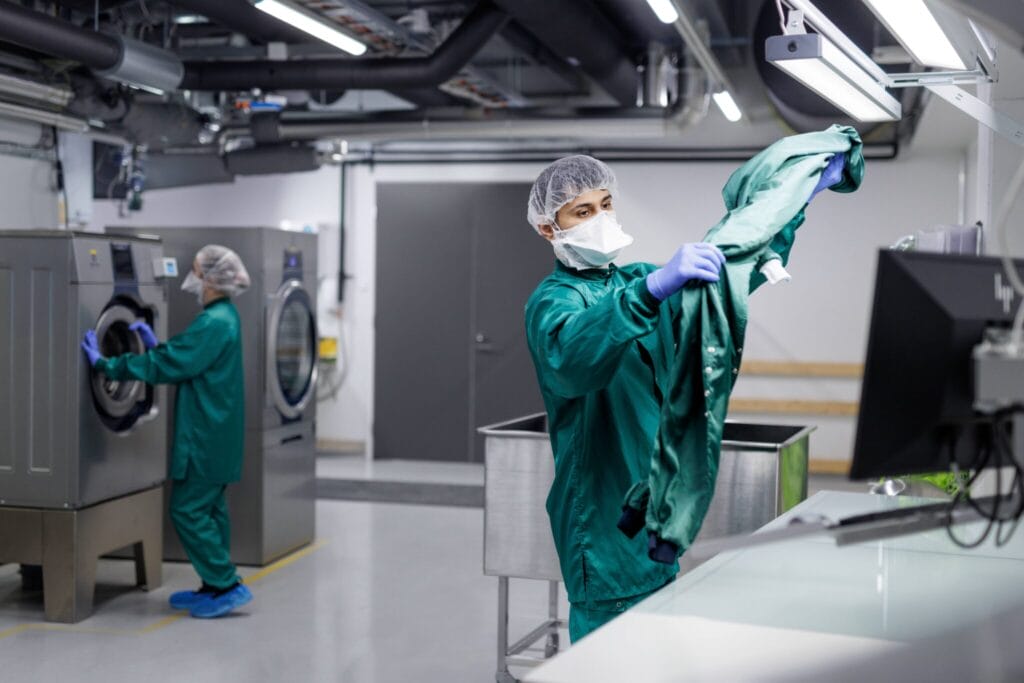
How to choose a PPE kit for your industry needs
Personal Protective Equipment (PPE) is critical to workplace safety, especially in high-risk industries like pharmaceuticals, healthcare, construction, and electronics manufacturing. But knowing how to choose a PPE kit that suits your industry’s specific risks can be challenging.
This guide explains what makes a PPE kit effective and how to select one that keeps your workforce protected and compliant.
The importance of PPE cannot be overstated, as it plays a pivotal role in reducing workplace injuries and illnesses. For industries ranging from construction to healthcare, the proper use of PPE helps in creating a safer work environment, boosting employee morale, and maintaining operational efficiency. By adhering to the appropriate safety standards, businesses can safeguard their workforce while also complying with legal safety requirements.
Identifying industry-specific risks
Every industry faces unique hazards, which means PPE can’t be one-size-fits-all.
- Construction workers need protection from falling objects, sharp tools and debris—think helmets, gloves and safety goggles.
- Healthcare professionals face biological threats and require fluid-resistant masks, gowns and face shields.
- Manufacturing and cleanroom environments often demand protection against chemicals, machinery, and contamination. Ear protection, chemical-resistant gloves, and ESD-safe garments are standard.
The first step in choosing the right PPE kit is identifying these risks through a detailed workplace assessment.
Types of PPE kits available
PPE kits come in various forms, each designed to address different safety concerns:
- Helmets or caps for head protection
- Goggles or face shields for eye and face safety
- Respiratory masks (e.g., FFP2, surgical, or powered air-purifying)
- Gloves (chemical-resistant or disposable)
- Gowns, coveralls or aprons for body protection
- Shoe covers or safety boots
- Earplugs, anti-static garments or underlayers
Some PPE kits are more comprehensive, offering full-body protection with items like coveralls and boot covers, which are particularly beneficial in environments with high exposure to hazardous substances. The selection of a PPE kit should be based on a thorough risk assessment of the workplace to ensure all potential hazards are effectively mitigated.
Regulations and compliance standards
Adhering to regulations and compliance standards is critical when selecting PPE kits. Globally, organisations such as the Occupational Safety and Health Administration (OSHA) and the European Union have set forth guidelines that dictate the minimum safety requirements for various types of PPE. These standards ensure that the equipment is tested and certified for effectiveness and reliability.
In addition to international guidelines, local regulations may impose additional requirements that businesses must follow. It’s essential for companies to stay informed about these standards to avoid legal penalties and ensure the safety of their workers. Compliance with these standards not only protects employees but also enhances the company’s reputation for safety.
Assessing quality and durability
When evaluating PPE kits, quality and durability are paramount considerations. High-quality PPE is often more durable, providing reliable protection over time, which is crucial in high-risk environments. Factors such as the materials used, the manufacturing process, and the supplier’s reputation play significant roles in determining a PPE kit’s quality.
Durability is equally important, especially in industries where PPE is subject to frequent wear and tear. Companies should seek out products that have been tested for resilience under the conditions specific to their industry. Investing in high-quality, durable PPE can lead to long-term cost savings by reducing the need for frequent replacements.
Cost versus protection value
It’s easy to focus on upfront cost, but underperforming PPE often leads to hidden expenses like:
- Increased injury risk
- Failed audits
- Disrupted operations
A smart approach is to evaluate total protection value. High-quality kits, especially when rented through providers like Lindström, offer cost predictability and full-service support including cleaning, repair and replacement.
Customizing PPE for specific industry needs
Customization of PPE kits is an effective way for companies to address their unique safety requirements. By tailoring PPE to specific operational hazards, businesses can enhance the safety and comfort of their employees. Custom solutions may include modified designs, materials that cater to specific environmental conditions, or branding elements for increased visibility and company representation.
For instance, in the textile rental service industry, companies like Lindström can offer customised PPE solutions that align with the specific needs of their clients. This approach not only ensures optimal protection but also improves compliance with industry-specific safety regulations. By working closely with a trusted provider, businesses can develop PPE kits that offer personalised protection and support their operational goals.




